Today produced a massive sense of achievement: I drove south from Ulm into Switzerland(via a little bit of Austria at Bregenz on the end of Lake Constance) and then shortly thereafter reached Liechtenstein, thus marking the completion of the challenge I had set myself. 37 countries(including England) now visited in three and a half month’s travelling!
I started the day by making use of my location in Ulm park-and-ride to catch the tram into the city centre, which was nearly empty at 9 am on Sunday morning.
Ulm’s biggest sight, in both senses of the word is its Minster church( Münster).This is in the middle of a large square in the centre of the town. It has the tallest spire of any church in the world at 162 metres(Salisbury cathedral, the UK’s tallest, is 123 metres).It was built steadily from the late 14th century and the spires were only completed in the 19th century. Miraculously it survived WW2 virtually unscathed, while 80% of the city centre was destroyed by bombing. Some other historic buildings have been nicely restored but about 50% of the city centre is modern. I am uncertain as to why some German cities restored their war damage completely ,and made almost exact copies of the previous buildings ,the new now indistinguishable from the old ones, and why some other cities like Ulm seemed to have filled bomb sites with modern buildings .
Leigh-Fermor describes the medieval atmosphere of the city in the thirties, much of it now vanished: "A late medieval atmosphere filled the historic town. The vigorous Teutonic interpretation of the Renaissance burst out in the corbels and the mullions of jutting windows and proliferated round thresholds....a market day was ending..dark dialect shouts criss-crossed through the snorts and the neighs. Villagers with flat wide hats and red waistcoats and cart whips hobnobbed in the colonnades..they gathered round the braziers and stamped... and the vaults that these pillars upheld were the floors of medieval halls as big as tithe barns.."
He goes on to comment on the destruction that was going to soon be inflicted on the old city he was witnessing from the top of his climb up the Minster tower(writing his book, of course, in retrospect ,after WW2).....
"Looking down, I could see a scarlet banner with the swastika on its white disc fluttering in one of the lanes, hinting that there was still trouble ahead. Seeing it, someone skilled in prophecy and the meaning of symbols could have foretold that three-quarters of the old city below would go up in explosion and flame a few years later: to rise again in a geometry of skyscraping concrete blocks"
Of the restored buildings the Rathaus in particular is still a striking and magnificently painted place. The bells in the Minster are powerful things; as they set to ringing before Sunday service,the whole city centre seemed to reverberate and even amplify the sound. Annoyingly I missed my tram back (they’re every half an hour on Sunday) so I walked back to the van park, but it was not far and only took 15 minutes, so Ulm is not a big place!
A pub quiz fact: Ulm is the birthplace of Albert Einstein.
I started the day by making use of my location in Ulm park-and-ride to catch the tram into the city centre, which was nearly empty at 9 am on Sunday morning.
Ulm’s biggest sight, in both senses of the word is its Minster church( Münster).This is in the middle of a large square in the centre of the town. It has the tallest spire of any church in the world at 162 metres(Salisbury cathedral, the UK’s tallest, is 123 metres).It was built steadily from the late 14th century and the spires were only completed in the 19th century. Miraculously it survived WW2 virtually unscathed, while 80% of the city centre was destroyed by bombing. Some other historic buildings have been nicely restored but about 50% of the city centre is modern. I am uncertain as to why some German cities restored their war damage completely ,and made almost exact copies of the previous buildings ,the new now indistinguishable from the old ones, and why some other cities like Ulm seemed to have filled bomb sites with modern buildings .
Leigh-Fermor describes the medieval atmosphere of the city in the thirties, much of it now vanished: "A late medieval atmosphere filled the historic town. The vigorous Teutonic interpretation of the Renaissance burst out in the corbels and the mullions of jutting windows and proliferated round thresholds....a market day was ending..dark dialect shouts criss-crossed through the snorts and the neighs. Villagers with flat wide hats and red waistcoats and cart whips hobnobbed in the colonnades..they gathered round the braziers and stamped... and the vaults that these pillars upheld were the floors of medieval halls as big as tithe barns.."
He goes on to comment on the destruction that was going to soon be inflicted on the old city he was witnessing from the top of his climb up the Minster tower(writing his book, of course, in retrospect ,after WW2).....
"Looking down, I could see a scarlet banner with the swastika on its white disc fluttering in one of the lanes, hinting that there was still trouble ahead. Seeing it, someone skilled in prophecy and the meaning of symbols could have foretold that three-quarters of the old city below would go up in explosion and flame a few years later: to rise again in a geometry of skyscraping concrete blocks"
Of the restored buildings the Rathaus in particular is still a striking and magnificently painted place. The bells in the Minster are powerful things; as they set to ringing before Sunday service,the whole city centre seemed to reverberate and even amplify the sound. Annoyingly I missed my tram back (they’re every half an hour on Sunday) so I walked back to the van park, but it was not far and only took 15 minutes, so Ulm is not a big place!
A pub quiz fact: Ulm is the birthplace of Albert Einstein.
I headed south ,away from Ulm,on the A7 motorway: not a bad road, but only two lanes and a long section of contraflow through roadworks. I would suggest ,if you are planning a drive through Germany ,to not treat the autobahn network as any more reliable than the UK motorways. At the border into Austria at the eastern end of Lake Constance I stopped to buy motorway vignettes.I could have avoided the 10km that I had to travel on Austrian motorways if I’d tried a bit harder, but forked out the minimum £5 for a week nonetheless, even though I would be in the country just 20 minutes .I did definitely need a Swiss one though. You can only buy these valid for the whole year, at £28,but I guessed that it would make life much much easier for rapid travelling through the length of Switzerland if I could avoid winding mountain roads and stick to the major routes..
30km further on,having briefly been in Switzerland,I crossed the river that marks the border between Switzerland and Liechtenstein(and ,further downstream,Austria) and drove 1km into Liechtenstein to reach the capital,Vaduz.There is only about 2km of flat land in this country before the lofty heights of very steep and high mountains.Frankly,there is not much to do in Vaduz apart from taking souvenir photos,unless you are trying to set up a tax haven(and you can’t do that on a Sunday!).I found parking in the empty car park of a financial institution and wandered along the small main street.There was a Marilyn Monroe exhibition for some reason,or an Art Museum to see,or lunch in some uninspiring restaurants.Several coachloads of foreign tourists who had been deposited here on some sort of tour,were also quickly finding out this place has somewhat of a lack of excitement .
30km further on,having briefly been in Switzerland,I crossed the river that marks the border between Switzerland and Liechtenstein(and ,further downstream,Austria) and drove 1km into Liechtenstein to reach the capital,Vaduz.There is only about 2km of flat land in this country before the lofty heights of very steep and high mountains.Frankly,there is not much to do in Vaduz apart from taking souvenir photos,unless you are trying to set up a tax haven(and you can’t do that on a Sunday!).I found parking in the empty car park of a financial institution and wandered along the small main street.There was a Marilyn Monroe exhibition for some reason,or an Art Museum to see,or lunch in some uninspiring restaurants.Several coachloads of foreign tourists who had been deposited here on some sort of tour,were also quickly finding out this place has somewhat of a lack of excitement .
I moved swiftly on and set a course 130km west towards Lucerne where I planned to spend the night. I had always wanted to visit this city since it featured in “Asterix goes to Switzerland”(!)The landscape was stereotypical of Switzerland:the Alps,which first came into sight when I was about 15km north of Bregenz,are still snow-capped,and alpine houses dot the lower slopes. I passed three more lakes after lake Constance(Bodensee),The Walensee,the Zurichzee,and the Zugersee before arriving at Lake Lucerne, and moving into the rather expensive campsite set back from the attractive lawned edge of the lakeshore a few miles down the lake from the town. Next to it is the Swiss Museum of Transport: I decided I had no appetite to go in here so caught the bus back to town.
Lucerne town’s trademark is the wooden roofed footbridges crossing the river leaving the lake.There is one particularly splendid one. All the gables supporting the roof have paintings depicting historical scenes and legends from the town’s past.It is 'tourist central' here,but the lake also seems popular with locals.Despite this there are some attractive old buildings in the town, a typical feature being the extensive Germanic mural painting on the building fronts.The setting on Lake Lucerne(easier to say than its local name of Viewaldstattersee)is extremely pretty,the lakeside and streets are heaving with people ,and boats are heading in all directions.
Lucerne town’s trademark is the wooden roofed footbridges crossing the river leaving the lake.There is one particularly splendid one. All the gables supporting the roof have paintings depicting historical scenes and legends from the town’s past.It is 'tourist central' here,but the lake also seems popular with locals.Despite this there are some attractive old buildings in the town, a typical feature being the extensive Germanic mural painting on the building fronts.The setting on Lake Lucerne(easier to say than its local name of Viewaldstattersee)is extremely pretty,the lakeside and streets are heaving with people ,and boats are heading in all directions.
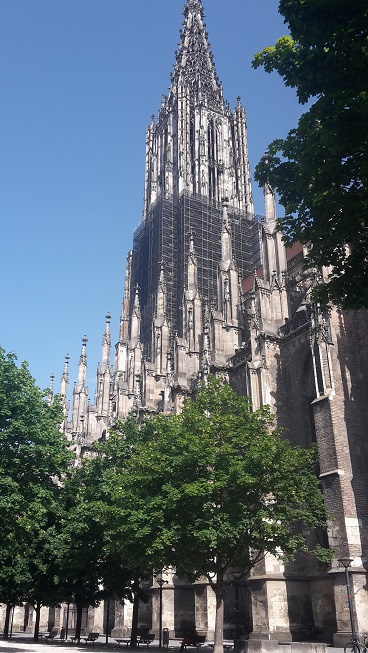
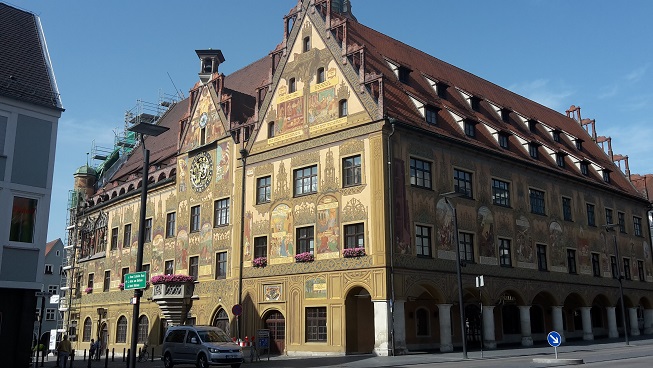

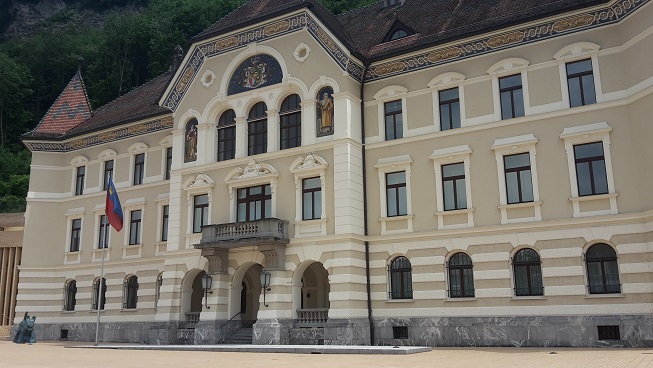
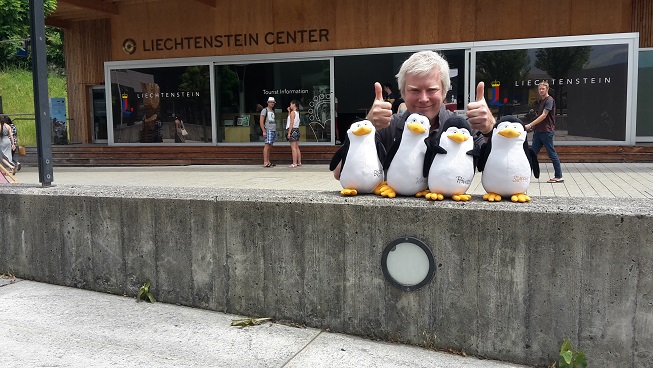
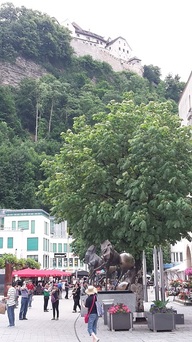
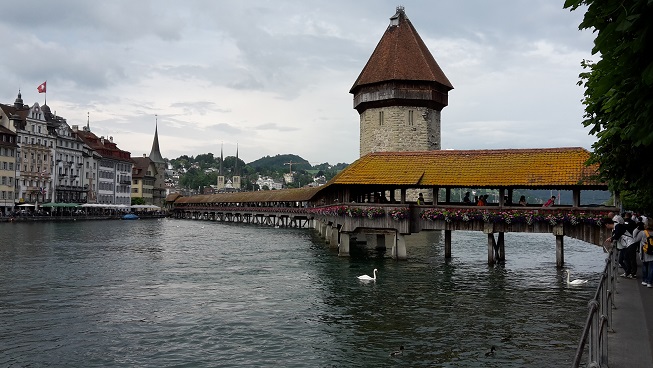

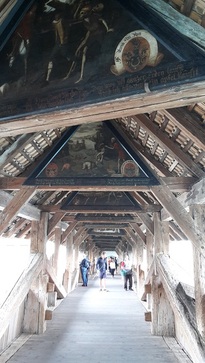
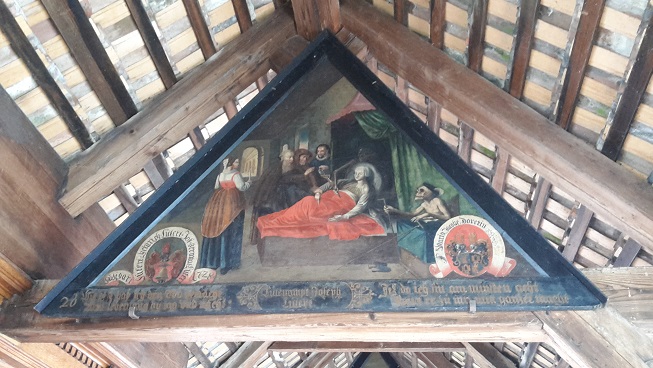
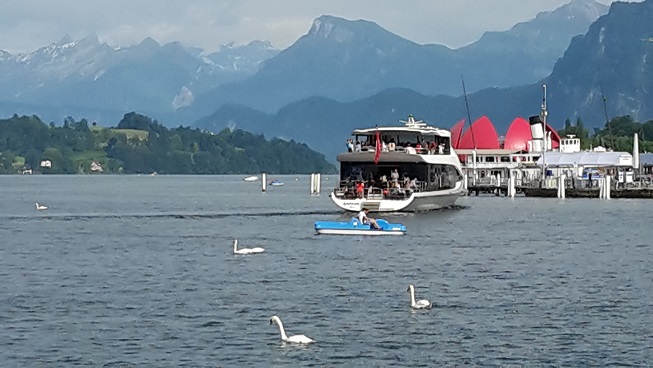
 RSS Feed
RSS Feed